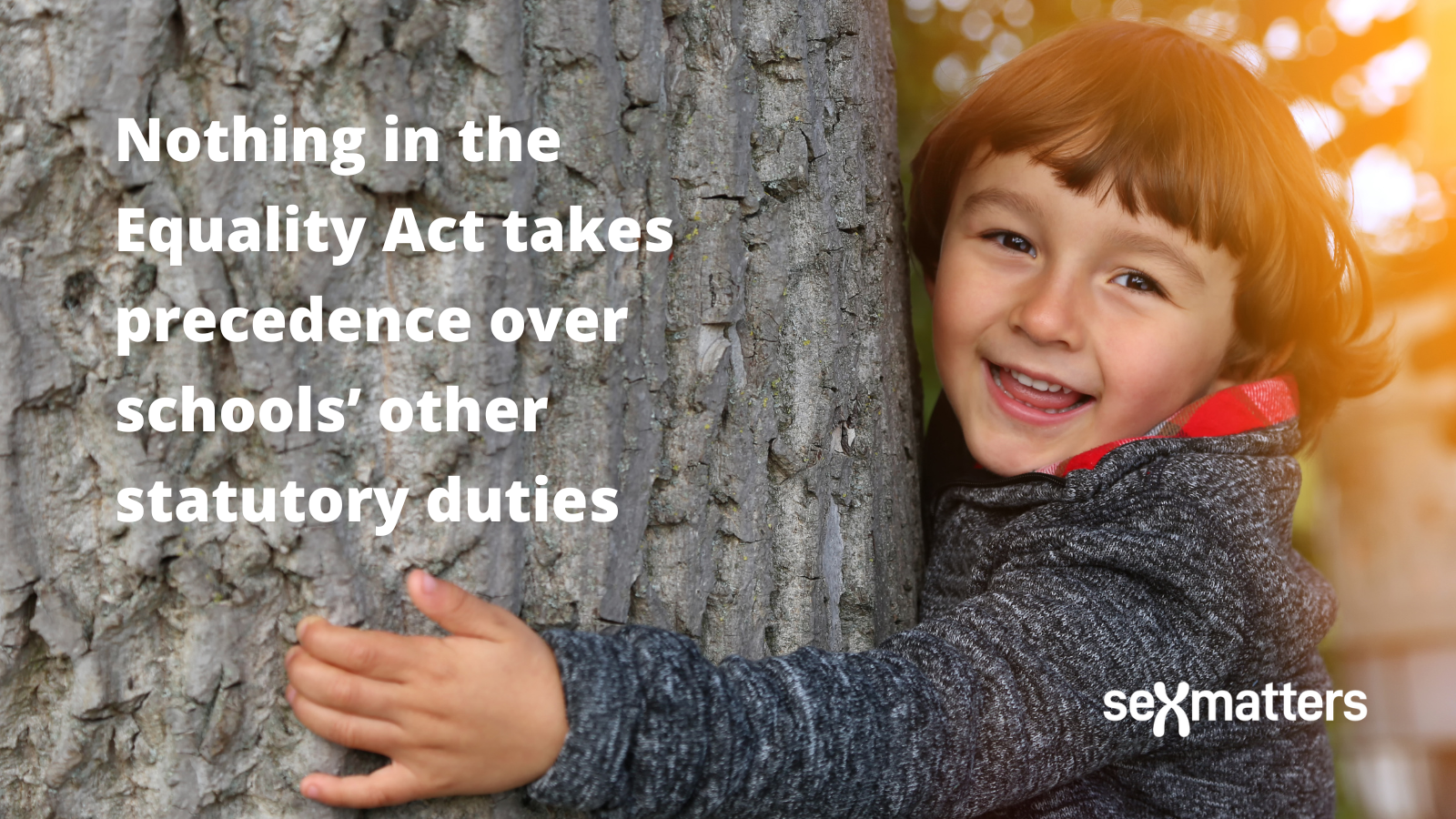Getting to good schools guidance

The Secretary of State for Education is due to release guidance for schools in relation to “gender-questioning” children (who may have the protected characteristic of gender reassignment under the Equality Act). This was delayed at the end of last term as the Department for Education needed more time.
In order to produce good guidance the DfE must overcome its fear of challenging Stonewall and Mermaids, and re-examine the interpretation of the law previously offered by the Equality and Human Rights Commission.
The basic legal framework for this guidance should be that:
- Schools have a purpose: to educate children and keep them safe.
- Schools have a duty of care and must act in the best interests of all pupils.
- Schools have a range of existing statutory duties they must comply with, including recording all children’s sex accurately, having due regard for the statutory safeguarding framework, and complying with statutory responsibilities in relation to children with special needs.
- Each school must ensure that any policy or practice that it adopts is consistent with its duties, and not unlawfully discriminatory under the Equality Act 2010.
- When taking decisions that are within its discretion in relation to an individual child a school must always act in the child’s best interests.
In considering how schools should respond to children experiencing gender distress there has been a tendency to jump to number 4: the Equality Act and the protected characteristic of “gender reassignment”, or to number 5: the school’s ability to act with discretion beyond ordinary rules. This is dangerous because a child experiencing gender distress remains a child. They have a sex that has not changed and cannot change.
The adults around them must not forget this. They should remember the rules, policies and principles that apply to all pupils and are designed to enable the school to provide education, keep children safe and treat them fairly.
Official guidance should remove uncertainty and risk as far as possible by reminding schools about their statutory duties, such as to record a child’s sex accurately, to use this information in everyday risk assessment and to communicate and enforce clear rules. These duties, we argue, preclude treating boys as if they were girls and vice versa.
While it is true that children who are proposing to transition may fall under the protected characteristic of “gender reassignment” in the Equality Act, schools and the DfE guidance should not become over-focused on this.
Having a protected characteristic means that a person has legal protection against discrimination because of that characteristic. They should not, in general, be treated differently because of it. A school should not treat children differently because they are black or white, Indian or Chinese. Nor should they single children out as gay or straight, or as having gender-critical beliefs, or as identifying as transgender. All of these are protected characteristics.
Falling under the protected characteristic of “gender reassignment” as defined by the Equality Act should not be confused with a clinical decision that social transition, hormonal treatment or surgical treatment for gender dysphoria is in the best interests of a child. And schools are not obliged to accommodate any proposed steps towards “social transition”, even if they are supported by a child’s parents or a doctor, if it undermines the school’s ability to fulfil its duty of care to this child or other children.
Nothing in the Equality Act takes precedence over schools’ other statutory duties, including their duty of care and safeguarding responsibilities for all pupils.
Schools and local authorities have been operating under guidance that ignores their statutory obligations. Some of this comes from unofficial sources such as Stonewall and Mermaids. But the most damaging comes from the Equality and Human Rights Commission.
We think the EHRC’s technical guidance got it wrong. It suggested that schools are legally required by the Equality Act to socially transition children and to treat a girl who wishes she was a boy as a “formerly female pupil”. We have written to Kemi Badenoch (Minister for Women and Equalities) and Kishwer Falkner (chair of the EHRC) and have sent our legal analysis to the DfE and the Government Equalities Office and will be publishing it next week.
